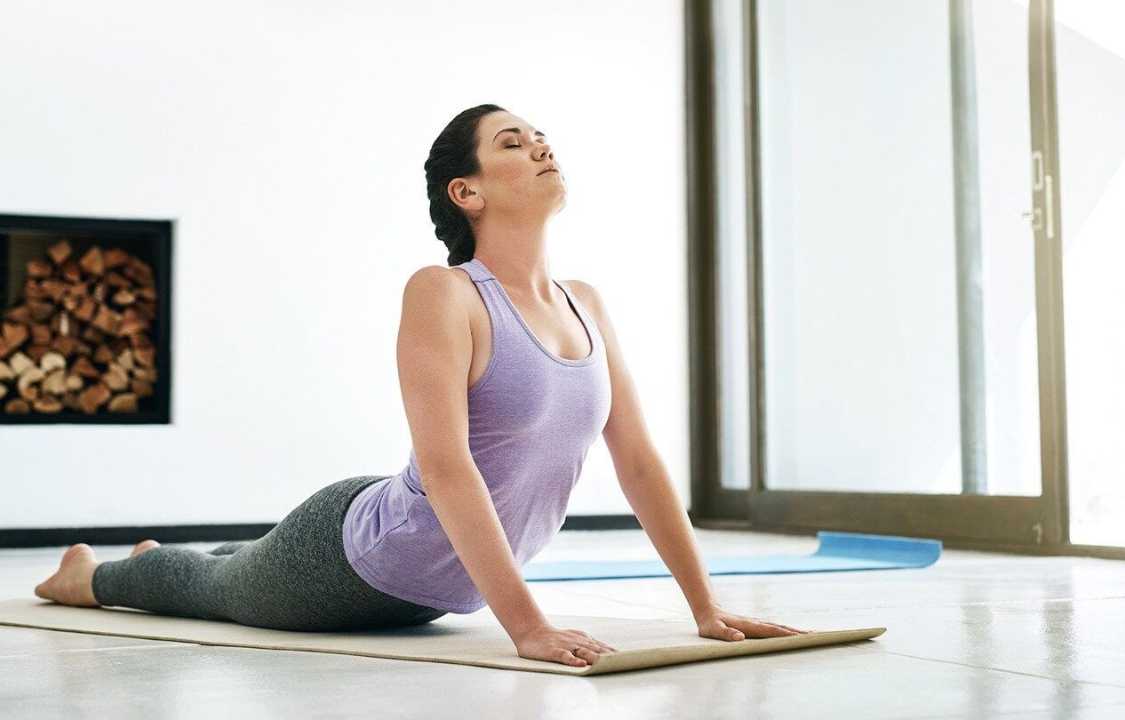Health Care
The Safe Way to do Yoga for Back Pain
Yoga, known for its gentle nature, is an ideal practice for maintaining back strength and flexibility. It has proven to be one of the more effective tools in reducing low back pain, which is the most common source of pain and disability among older adults.
According to Dr. Lauren Elson, medical editor of the Harvard Special Health Report on Yoga, the practice helps strengthen and stretch back muscles that may be tight, thereby improving mobility. Yoga involves a series of poses, also known as postures, and emphasizes breathing techniques. These postures guide individuals to stretch and strengthen their muscles, reducing muscular tension, enhancing flexibility and strength, and improving balance and bone strength.
For low back pain specifically, yoga can be particularly beneficial for the muscles supporting the back and spine. This includes muscles like the paraspinal muscles, which aid in bending the spine, the multifidus muscles that stabilize vertebrae, and the transverse abdominis in the abdomen, contributing to spinal stability.
Beyond the physical benefits, yoga offers advantages for emotional well-being. The slow movements and the continuous focus on proper breathing in yoga can help alleviate stress and reduce feelings of anxiety and depression associated with back pain.
What goes wrong
While yoga offers numerous benefits, it is essential to approach it with caution to prevent injuries, particularly to the back. Like any form of exercise, injuries can occur when individuals neglect proper form and speed, hastily moving into yoga poses without gradually easing into them, warns Dr. Lauren Elson.
This is akin to using improper technique while lifting weights or performing fast repetitions instead of maintaining slow, controlled movements. It’s analogous to sprinting on a treadmill at a high speed without gradually increasing the pace. Such approaches increase the risk of injury.
In yoga, it is crucial to engage muscles to establish a stable foundation for movement and then adhere to proper form, slowly lengthening and stretching the body. For instance, during a seated spinal twist, a therapeutic pose for low back pain, the focus should not be on rotating as quickly and extensively as possible.
“Instead, you should first activate your core muscles and feel as though the spine is lengthening. Then twist slowly until you feel resistance, and hold for as long as it’s comfortable,” advises Dr. Elson.
Tips to protect your back on the mat
To minimize the risk of injury during yoga practice, it’s advisable to follow certain precautions:
1. Avoid simultaneous twisting and extending: This combination can compress intervertebral joints, potentially leading to strain or injury.
2. Use props for support: Incorporate blocks and bolsters to provide additional support when necessary, helping to maintain proper alignment and reduce the risk of overextension.
3. Utilize yoga belts for assistance: If reaching your toes is challenging, use a yoga belt to loop around your feet, providing support and allowing for a controlled range of motion.
4. Opt for seated forward bends: Perform forward bends while seated rather than standing, and engage your core muscles when returning to an upright position to protect the lower back.
5. Seek assistance for pose modifications: If uncertain about the correct form or if a pose feels uncomfortable, ask for guidance to modify the pose appropriately for your needs.
Remember, it’s crucial to listen to your body, respect its limitations, and stop any movement that causes discomfort or pain during your yoga practice.
Make the right moves
Before starting a yoga program, it’s essential to consult with your doctor, especially if you experience low back pain. Dr. Elson recommends avoiding yoga if you have specific back issues, such as a spinal fracture or a herniated disc.
Once you receive approval, take proactive steps to protect your back during yoga practice. Communicate with your yoga instructor in advance, sharing details about any pain or limitations you may have. This information enables the instructor to provide modifications for certain poses or offer guidance to ensure correct execution without causing stress to your back. Additionally, consider seeking out yoga classes specifically designed for individuals seeking relief from back pain, which can be found in yoga studios or community centers.
Despite concerns, it’s important to recognize that the bends, twists, and stretches inherent in yoga can contribute to the overall health of your low back. By mindfully practicing yoga, individuals can safely engage in movements that help stretch and strengthen tight and aching back muscles, according to Dr. Elson.

